58 F. high in the Twin Cities Friday.
54 F. average high on October 25.
47 F. high on October 25, 2012.
Historical Data for October 25:
1996:
An unusual outbreak of severe occurred across north central Minnesota.
Intense low pressure tracking into Minnesota produced blizzard
conditions over portions of South Dakota, while further east in
Minnesota, unseasonably mild temperatures developed. Temperatures
climbed near 70 with dew points in the 50s. 1 to 1 3/4 inch hail and
strong winds were reported in Lac Qui Parle, Yellow Medicine, Chippewa,
and Swift Counties. These storms produced 12 tornadoes, the largest
reported were F2s. Southwest of Alexandria in Douglas County, an F2
tornado with a 9 mile track destroyed several homes. One women sustained
broken bones and internal injuries when a portion of her house, with
her inside, was flung 200 feet onto the interstate. This tornado also
pushed over a 500 pound fuel tank. Tornadoes also touched down in Swift,
Kandiyohi, Pope, Stearns, and Isanti Counties.
1985: Indian Summer across Minnesota. Twin Cities hits 70.
* data above courtesy of the
Twin Cities National Weather Service.
 "In
fact, after two of the driest years on record, the US was only a
quarter-inch away from breaking the record for the wettest six months
ever measured, nationwide. The two years ending in September 2013 were
also tied for the warmest in the nation’s recorded weather history." - excerpt from a story at Quartz below.
"In
fact, after two of the driest years on record, the US was only a
quarter-inch away from breaking the record for the wettest six months
ever measured, nationwide. The two years ending in September 2013 were
also tied for the warmest in the nation’s recorded weather history." - excerpt from a story at Quartz below.
 The "Euro"
The "Euro"
Minnesota
is a state of armchair meteorologists. Everyone has a story & an
opinion. Lately I’ve been getting questions about the “Euro” (ECMWF)
model. “You refer to it a lot in your column – is it really better?”
Yes. Overall it may be the best weather model on the planet today. Why?
NOAA runs scores of models with acronyms like NAM, RAP, HRRR and HWRF.
We rely on many of these simulations; the art is knowing which one to
believe and when.
The Europeans focus all their time, money &
resources into ONE model, the ECMWF. They initialize it with new data as
the model is running. Like fueling a jet in midair.
Last year the
ECMWF tipped me off that Sandy would veer into New Jersey 8 days before
landfall. In the wake of Sandy NOAA is redoubling its efforts and
modeling resources to try and get back on top. I wouldn’t bet against
them.
Expect a minor temperature relapse today, gusty winds &
scrappy clouds, highs stuck in the low 40s. Sunday may restore your
faith in late October as highs push into the mid-50s again.
We
chill down next week, dry weather prevailing Monday and Tuesday, before
a sloppy southern storm pushes a shield of rain into Minnesota
Wednesday and Wednesday night. Models dry us out during the day
Halloween as the shield of rain pushes into Wisconsin. We may just catch
a break for Trick-or-Treating this year.
* ECMWF "Euro"
forecast above valid Thursday evening (showing the brunt of the rain
pushing just east of Minnesota) courtesy of WSI Corporation.
 More Heavy Snow For Black Hills
More Heavy Snow For Black Hills.
NAM data thru late Monday night shows another significant snow
potential from Wyoming and Montana into the western Dakotas, as much as a
foot north/west of Rapid City. May: NOAA and Ham Weather.
 A Couple Of Milder Days
A Couple Of Milder Days.
Again, not quite Indian Summer, and we can (technically/officially)
call it Indian Summer now that we've seen the first frost. But 50s felt
good yesterday; more 50s on Sunday, again Wednesday of next week; ECMWF
model data suggesting low 60s on Halloween as the brunt of the rain
shifts east. Graphic: Weatherspark.
 An Active Pattern
An Active Pattern.
GFS model data also shows a major storm for the Plains and Midwest by
Wednsday of next week, but this model takes the storm farther east than
the ECMWF solution. The southeast slowly warms, another weekend cool
frontal passage on the way for New England. Map: NOAA and Ham Weather.
 Halloween Weather
Halloween Weather. As always, Dr. Mark Seeley has some good historical climate nuggets in this week's edition of
The WeatherTalk Newsletter: "
Halloween
weather is usually pleasant in Minnesota with temperatures commonly in
the 40s and 50s F. Precipitation occurs slightly less than a third of
the time. For the Twin Cities and further south snow is unlikely for
Halloween, occurring only about one year in ten. Of course many remember
the famous Halloween Blizzard of 1991, when 3 to 10 inches of snowfall
was measured across eastern parts of the state, and then the bulk of the
snowfall occurred over November 1-2, leaving many observers with over 2
feet (28.4" in the Twin Cities and 36.9" in Duluth). The all-time
temperature records for Halloween include a reading of 86 degrees F at
Worthington in 1950, and a reading of -4 degrees F at Hallock in 1913..."
What This Winter Is Packing. Thanks to Emily Sohn at
Discovery News for including my inane comments in a story focused on the winter to come. Cue the shrugging and hand-waving arguments: "...
There
are just so many variables, many of which can change in an instant. “A
three-to-six month weather outlook is still more of a horoscope than an
actual scientific prediction -- your horoscope may be a little more
accurate, in fact,” said Paul Douglas, senior meteorologist and
co-founder of WeatherNation TV, a new 24-hour national weather channel.
“To be honest, any forecast beyond two weeks should come with a warning
much like on a pack of cigarettes. In the end, some things are
inherently unknowable.” Among the factors that determine whether a
winter will be lion-like or lamb-like, perhaps the most well known is
the El Niño-Southern Oscillation, also known as ENSO, which describes
shifts in the temperature of surface waters in the Pacific Ocean..."
Upward Blip In Temperatures?
Here's the latest trend of the NAO, where we've been and where we (may)
be going. A strong negative phase of the NAO corresponds with colder,
Canadian air having a clear runway to invade the USA (especially east of
the Rockies), which is what we've seen for the past 7-10 days. An
upward trend in the coming days may bring a few highs in the 50s to near
60 in the Twin Cities the latter half of next week - hardly Indian
Summer, but not as harsh as recent days. It should be warm enough aloft
for a potentially significant rain event by the end of next week. Graph:
NOAA NCEP.
North Atlantic Oscillation.
NC State
has a good explanation of the NAO and how, along with ENSO (El Nino and
La Nina) it helps to set the tone for weather across much of North
America. Again, it appears we're heading into a positive (milder) phase
of the North Atlantic Oscillation in the next 1-2 weeks, a slight
(temporary) reprieve from the worst of the wind chill over the northern
USA.
China's Smog As Seen From Space.
The scale of the smog is amazing from a meteorological perspective,
cold (stable) air, a strong inversion layer trapping pollutants near the
ground, covering a huge part of northern and northeastern China.
Details from
NPR: "
We
told you earlier this week about how smog choked the northeast Chinese
city of Harbin, which is home to 11 million people. Today, we get a
stunning look at just how bad the problem is from an image taken by the
Suomi NPP satellite on Tuesday. That murky gray you see below is all
smog..."
Image credit above: "
Heavy smog has
shrouded much of eastern China, and air quality levels have been dropped
to extremely dangerous levels. The heavy smog is caused by industrial
pollution, coal and agricultural burning, and has been trapped by the
mountains to the west and wind patterns. The thick haze of smog is
clearly visible as the murky gray color in this true color satellite
image."
NASA/NOAA.
Response To A City's Smog Points To A Change In Chinese Attitude. Because it's pretty hard to hide, dismiss or conceal a 1,000 mile wide stationary toxic cloud. Here's an excerpt from
The New York Times: "...
Action plans in Harbin, Beijing and other cities, along with broad national policies
meant to curb air pollution announced last month, signal that some
officials are serious about tackling the chronic problem. On Thursday,
the Ministry of Environmental Protection said it was sending inspection
teams to cities across China for the winter to ensure that environmental
regulations were enforced. Awareness of various kinds of pollution —
air, water and soil — has risen quickly this year, especially among
middle-class urbanites..."
Photo credit above: Hao Bin/European Pressphoto Agency. "Government workers moved signs to block roads amid heavy fog in Harbin this week."
Wildfire Smoke Puts At Risk The Health of Americans Living Far From The Flames. I did a double-take on this story from the NRDC,
The National Resources Defense Council. Here are a couple of noteworthy clips: "...
Today my NRDC colleagues released a report concluding
that wildfire smoke can pose serious health risks to people even
hundreds of miles away from a blaze. That means residents of cities and
suburbs far from forests or grasslands may still be vulnerable to the
asthma attacks, pneumonia, and more serious chronic lung diseases
brought on by smoke....My colleagues looked at data from the 2011
wildfire season and found that two-thirds of Americans—nearly 212
million people—lived in counties affected by smoke. Six states that
didn’t even have major fires that year still had to deal with more than a
week of medium- to high-density smoke conditions. Texas topped the list
of most smoke-affected states, with more than 25 million people living
in places with wildfire smoke conditions for one week or more. Illinois
was second, with nearly 12 million people living in areas with smoky
conditions, and Florida came in third, with more than 11 million..."
Lessons From Sandy.
We're coming up on the one year annniversary of Superstorm Sandy (it
came ashore on October 29, 2012). What were the major take-aways from a
meteorological perspective? What astronomical forces conspired to make
this storm even worse than it should have been. Sea level in New York
City has risen 8-12" in the last 40 years, the result of volumetric
expansion of warming ocean water and melting from glaciers and
Greenland. In today's edition of
Climate Matters we take a look at the factors that made Sandy a 1 in 500 year event.
Hurricane History: Sandy And Wilma. Here's an excerpt of a good post marking two tropical anniversaries from Brian McNoldy at
The University of Miami: "
One
year ago this morning, Sandy intensified to a hurricane just south of
Jamaica. By the morning of October 25th, it rapidly intensified to a
Category 3 hurricane with 115mph winds as it made landfall on the
southeastern coast of Cuba. Model guidance was coming into better
agreement on a track that would bring Sandy into the New Jersey coast as
a very large cyclone on October 29th, possibly not tropical, but still
very potent..."
Sandy: One Year Later.
Architectural Record
has an interesting perspective on some of the lessons learned, and what
more needs to be done to mitigate damage from the next (inevitable)
super-storm; here's an excerpt: "...
The predictable chaos and lack
of information are the outcome of any disaster, but one year after Sandy
(which killed 150 people and damaged or destroyed some 650,000 houses),
officials, charities, and disaster experts are concluding that much can
be done to smooth the recovery process—and that there’s more for
architects to do other than drive-by damage assessments and holding
empty “ideas” competitions. Now architects are working in neighborhoods
to link people like Chati to the resources they need. Sandy was a much
more destructive storm than predicted, and so-called 100-year storms may
now arrive much more frequently. Such unprecedented climate violence
makes the option of simply rebuilding questionable..."
Photo credit above: Sage and Coombe Architects. "
Sage and Coombe Architects’ trellised canopies perch in front of restored concession stands in Queens, N.Y."
Ted Fujita Defined Getting Blown Away.
The meteorologist and legendary tornado researcher who's name became
the basis for the F-scale for rating the destructiveness of tornadoes is
featured in this excellent article at
The Tennessean; here's a clip: "...
The
Weather Bureau was formed in 1870 to take meteorological observations
and to give notice of the approach of severe storms to the coastal areas
of the United States and the Great Lakes. The service started as a part
of the U.S. Army Signal Corps, moved to the Department of Agriculture
in 1890, and then to the Department of Commerce in 1940; in 1970, it was
renamed the National Weather Service and became part of the renamed
National Oceanic and Atmospheric Administration. The service is
dedicated to improving the safety of Americans and their property.
However, it was not until 1950 that forecasters were freed to use the
word tornado in their forecasts and warnings. Prior to a July 12, 1950,
authorization, which stated, “There is no regulation or order against
the forecasting of tornadoes,” the bureau was actively discouraged and
often prohibited from predicting tornadoes for fear of striking
unreasonable panic in the public..."
Photo credit above: "
Theodore Fujita was born Fujita Tetsuya." University of Chicago.
Cool Discovery: Mountains Moved By Lightning. I had no idea. Here's a clip from a story at
reasons.org: "
Lightning, as fleeting as it may be, shapes the land around us.
Although many processes weather the landscape, a recent paper published
in the journal Geomorphology demonstrates that rock formations of a
particular shape and signature were thought to result dominantly from
cold temperatures. However, studies of such rock formations in Lesotho, South Africa show that lightning strikes also play a major role..."
Too Close To Home: Deluge Engulfs Flood Researcher's Town. LiveScience has the article; here's the intro: "
G.
Robert Brakenridge has spent his career researching floods. But a
lifetime's worth of knowledge didn't make it any easier when his own
life was upended by rushing water. Brakenridge, the director of the
Dartmouth Flood Observatory and a senior scientist at the University of
Colorado, Boulder, was among the hundreds of people cut off from the
world in Lyons, Colo., in September, when days of heavy rain, unleashed
torrential floods along the Colorado foothills..." (Photo credit above:C. R. Brakenridge).
The 27 Most Glorious Moments In The History Of BBC Weather.
I'm getting dizzy - hope this guy is wearing tennis shoes, because he's
getting a work-out. Here is a fascinating (R-rated) chronology of how
weather has been communicated in the UK since 1936, courtesy of those
wonderful troublemakers over at
BuzzFeed: "
BBC Weather is eternal. It’s been there 27 minutes and 57 past the hour since 3645 BC, hasn’t it?"
I Don't Need No Stinking TV Weather Graphics!
This confirms my theory. We went from telling weather stories around a
campfire to telegraph, telephone, magic markers, magnetic boards, crude
blocky 2-D graphics to 3-D fly-through (rings a bell) to interactive
touch-screen maps and tablets. What's next? Depending on the economy and
Q4 advertising sales, your favorite local TV station may have to resort
to WeatherBoard HD. I think it has serious potential. Check out this
clip on
YouTube: "
WEATHER
BOARD HD! Wednesday morning, Jonathan Oh's weather computer decided to
go on vacation, so it was time to introduce the newest item in the
arsenal of our weather center... the "Weather Board HD"! It's
interactive, live, and easy to read!"
Move Over Bezos, ESPN Can Do News Better Than You.
I doubt ESPN will dilute its (incredible) sports brand by moving into
news, but the velocity at which media is transforming today? Nothing
would surprise me. Here's a clip from an interesting story at
Reuters: "...
Like
Alexander the Great, ESPN has recorded so many victories in such a
brief time that it will soon weep upon discovering that no additional
sports worlds exist to conquer. The company has entered its mop-up
phase, a place where most mature companies end up, doing more of what it
does best, finding new ways to serve the old stuff, but not advancing
at the old velocity. But if ESPN wanted to break out of the gold-plated
sports ghetto that it now owns, what better strategy than to spend its
millions refashioning itself as “The Worldwide Leader in News.”
International news. Political news. Domestic news. Cultural news.
Business and financial news. Local news (it already has a sports
presence in five top cities). Weather. And, yeah, even sports. The idea isn’t as fanciful as it seems..."
The Starbucks Guide To World Domination?
How did they go from one store in Seattle to one store on every block
in the USA? Well, it sure seems that way. Here's an excerpt of a
fascinating read at
Slate: ..."
So how did Schultz take Starbucks from a small chain—six stores as of 1984—to world domination: 18,000 stores in 60 countries,
generating $13 billion in sales? First, he quit. If he couldn’t sell
drinks to Starbucks customers, he would start his own chain. In 1986,
Schultz, backed by Seattle investors, started a company called Il
Giornale, opening three stores in less than a year. And so why is it
that today we all drink Starbucks and not Il Giornale? It’s not because
Schultz failed. It’s because Baldwin and Bowker decided to sell
Starbucks to focus their energy on Peet’s Coffee, which Starbucks had
purchased in 1984..."
Golf Leaf Trees Discovered In The Australian Outback. Now I've officially seen everything, after reading this amazing article at
Gizmag; here's the introduction: "
Scientists
from Australia's Commonwealth Scientific and Industrial Research
Organisation (CSIRO) have discovered that eucalyptus trees in the
Australian outback are drawing up gold particles from deep underground
through their root system and depositing the precious metal in their
leaves and branches. Rather than being a new source of "gold leaf," the
discovery could provide a cheaper, more environmentally friendly way to
uncover valuable gold ore deposits..."
The Incredible Shrinking Plane Seat. No kidding. No, you're not getting wider, airline seats are getting narrower, as reported in
The Wall Street Journal; here's a clip: "...
The
new trend in economy seating reverses a half century of seat growth in
economy class. Early jet planes like Boeing's 707 had 17-inch seats, a
dimension based on the width of a U.S. Air Force pilot's hips, says Airbus
marketing chief Chris Emerson. That standard for long-haul flying
increased to 18-inches in the 1970s and 1980s with the 747 jumbo and the
first Airbus jets. It widened to 18.5 inches with the Boeing 777
in the 1990s and A380 superjumbo in the 2000s. Now, cost-conscious
airlines are moving to lighter 17-inch-wide seats on their Boeing 777
and 787 Dreamliners and 18-inch seats for A350s..."
Why You Look Like Your Dog. O.K. This one hits close to home - details from
The Atlantic; here's an excerpt: "...
Could
there be something to the old adage that people resemble their pets?
The phenomenon has been amply documented. Researchers around the world
have repeatedly found that strangers can match photos of dogs with
photos of their owners at a rate well above chance [4].
Perhaps people are drawn to animals that look like them. In a study of
female college students, those with longer hair judged flop-eared
dogs—spaniels, beagles—to be more attractive, friendly, and intelligent
than dogs with pointy ears; women with shorter hair concluded the
opposite.."
The Lost Wheels "Rule for a Day" Record Release Show.
Looking for something spontaneous to do tonight? Check out the Lost
Wheels, an up and coming local rock/blues band releasing a new CD (and
vinyl) this weekend at the Fine Line Music Cafe. Hope to see you there. "
The
Lost Wheels fuse together old-school American blues with up-tempo
Australian pub rock – combining a hint of funk and a heavy dose of slide
guitar." More info:
http://thelostwheels.com/bio/
Website:
http://thelostwheels.com/ Facebook :
https://www.facebook.com/thelostwheels
TODAY: Intervals of sun, windy & cool. Winds: NW 15-25 High: 46
SATURDAY NIGHT: Partly cloudy and chilly. Low: 30
SUNDAY: More sun, milder again. Winds: SW 10-15. High: 54
MONDAY: Patchy clouds, cooling down. Wake-up: 32. High: 43
TUESDAY: Mix of clouds and sun, still cooler than average. Wake-up: 26. High: 42
WEDNESDAY: Cloudy with rain developing. Wake-up: 36. High: 55
HALLOWEEN: Mostly cloudy, but drier for Trick-or-Treating. Wake-up: 50. High: 61
FRIDAY: Mostly cloudy, breezy and colder. Wake-up: 39. High: 50
* photo credit above: Mike Hall.
Climate Stories...
Arctic Temperatures Reach Highest Levels In 44,000 Years, Study Finds. Here's the intro to a LiveScience story at
Huffington Post: "
Plenty
of studies have shown that the Arctic is warming and that the ice caps
are melting, but how does it compare to the past, and how serious is it?
New research shows that average summer temperatures in the Canadian Arctic
over the last century are the highest in the last 44,000 years, and
perhaps the highest in 120,000 years. "The key piece here is just how
unprecedented the warming of Arctic Canada is," Gifford Miller, a
researcher at the University of Colorado, Boulder, said in a joint
statement from the school and the publisher of the journal Geophysical
Researcher Letters, in which the study by Miller and his colleagues was
published online this week..."
Climate Change Will Make Colorado's Millenial Rainstorm A Lot More Common. Here's an update from
Quartz: "
The rainfall that caused massive flooding in Colorado last month was a once-in-a-millennium event, according to a recent study (pdf). And climate change is making those kinds of extreme weather events more common. The
impressively named Hydrometeorological Design Studies Center, a
division of the National Weather Service, has concluded with greater
than 90% certainty that the rainfall was millennial in nature. Here’s
the chart for one rain gauge in Boulder, Colorado, that was inundated
over seven days.."
Photo credit above: "Houses partially submerged last month in Longmont, Colorado." AP/John Wark
Elon Musk: Oil Campaign Against Electric Cars Is Like Big Tobacco Lobbying.
The Guardian has the story - here's an excerpt: "
Attacks
on electric cars by the oil industry are on a par with misinformation
campaigns promoted by big tobacco companies and vested interests
undermining climate science, according to Elon Musk, the serial entrepreneur who founded PayPal and the brains behind both the space exploration company SpaceX and the electric sports carmaker Tesla Motors.
The oil giants, he reckons, are attempting to sow the seeds of doubt.
Speaking before the opening of Tesla's new luxury store in the Westfield
shopping mall in Shepherd's Bush, London, last night, Musk told the
Guardian: "It's kinda like the battle against 'big tobacco' in the old
days, and how they'd run all these ads about how tobacco's no problem..."
Photo credit above: "
Elon Musk in the new Tesla Model S high performance electric car in the showroom at Westfield London." Photograph: Sarah Lee for the Guardian.
Adversaries, Zombies And "NIPCC" Climate Psuedoscience. There's a lot of (manufactured/sponsored) misinformation out there, as described in this post at Australia's
The Conversation; here's a clip: "...
IPCC
reports openly discuss the strengths, weaknesses, criticisms and
uncertainties of the science. The reports provide policy makers with a
range of plausible outcomes given rising atmospheric CO2. Heartland’s
NIPCC partially mimics the IPCC, but with key differences. It is written
and reviewed by dozens of people, almost exclusively drawn from the “sceptic” community,
and is consequently highly partisan. Indeed, the NIPCC advocates an
adversarial approach to assessing climate science, with partisan “teams”
arguing for different positions..."
Photo credit above: "
Dead science lives on, thanks to the Non-governmental International Panel on Climate Change."
Scott Beale
Wall Street Demands Answers From Fossil Fuel Producers On "Unburnable" Carbon.
Keep an eye on this - fossil fuel companies won't go down without a
fight. Inside Climate News has the story; here's an excerpt: "A
well-heeled coalition of investors is asking top fossil fuel companies
to calculate the risks of plowing billions into new oil, gas and coal
projects. They fear that carbon emission limits and slowing demand will
turn them into bad investments that leave investors worse off. The
requests, contained in
letters sent to 45 companies
last month, are part of an initiative aimed at persuading oil producers
and others to rein in their quest to stockpile more carbon energy. They
hope to do so by tapping into growing concerns that climate policies
and market factors could prevent companies from selling all of their
reserves of fossil fuels, which are still growing fast..."
Photo credit above: "Mindy
Lubber, president of Ceres, speaks at a conference in 2012. On
Thursday, Ceres launched an initative with the backing of investors
representing about $3 trillion. They're demanding that fossil fuel firms
divulge the financial risks of their "unburnable" carbon reserves." Credit: Julie Sterling Williams.
* more perspective on the pension fund initiative from ABC News.
Climate Change Affects Australia's Epic Wildfires - No Matter What Prime Minister Says. Here's a clip from
Time Magazine: "
Wildfires are nothing new in Australia, a sunburned country with
plenty of vegetation to burn to a crisp when temperatures skyrocket
during the southern-hemisphere summer. Deadly wildfires are immortalized
in Australian history, including Black Saturday in 2009, when a
frighteningly fast wildfire
in southern Australia killed 173 people in a single day. The blazes
that burned in southeastern Australia this past week may not go down in
history — just one death
has so far been reported, which is a testament to the bravery of the
country’s firefighters and the experience that most Australians have in
dealing with fires. But the wildfires did manage to burn more than
121,000 hectares, and the smoke blackened the skies of Sydney,
Australia’s largest city, while damage is set to exceed $100 million..."
Photo credit above: Rob Griffith - AP. "
Firefighters control flames during hazard reduction in Bilpin, 46 miles from Sydney, Oct. 23, 2013."
A New Look At Climate "Tipping Points", Where Familiar Patterns Vanish Forever.
The concept of "average weather" continues to morph as the climate
system continues to warm over time. What does a "tipping point" look
like for Minnesota and the Midwest? One significant milestone
highlighted in this article explains that it's the point at which the
coldest years to come are warmer than the hottest years already
experienced by anyone now alive. Ron Meador at
MinnPost
takes a look a potential local tipping points and the implications.
Expect a slow warming trend to continue, along with increasingly
frequent episodes of head-snappingly-strange weather. Here's an excerpt:
"
Every so often, though, a piece of research comes along to show
with special clarity and power the fix we're in, how rapidly we are
hurtling toward a world entirely outside our experience of this
one. Such a study appeared earlier this month in Nature, a journal whose
prestige may assure that the authors' new term "climate departure"
becomes as commonplace as climate change, climate disruption and climate
chaos. "Climate departure" refers to a kind of tipping point at which
the up-and-down fluctuations of annual temperature averages climb into a
zone completely and permanently outside a "normal" range established in
a record going back to 1860..."
Graphic credit above:
CC/Camilo Mora "
This
detail from the researchers' interactive map suggests that within three
to four decades, the Twin Cities region will be permanently outside its
historical temperature range — that is, the region's coldest years will
be warmer than the hottest years in a record stretching back to 1860.
The red line is for temperatures modeled on a business-as-usual
scenario, in which greenhouse gas emissions continue to rise without
major new efforts to curb them; the yellow line is for temperatures
modeled on a scenario of aggressive global reductions."
Mystery Of The "Missing" Global Warming.
Here is a good summary of a major point climate scientists are making:
over 90% of the observed warming is going into the world's oceans. Here
are two clips from a recent story at
Bloomberg Businessweek: "...
Have
you heard the one about how global warming stopped in 1998? It’s been
called a “pause,” a “hiatus,” a “slowdown” and a “siesta.” Above all,
it’s a red herring, and it isn’t difficult to find where some of the
‘missing’ heat has gone....The warming at the ocean’s surface layer may
have slowed a bit, but ocean temperatures in aggregate have continued to
rise unchecked during the so-called hiatus, according to the IPCC.
That’s important because while the atmosphere accounts for just 1
percent of planetary heat, the oceans carry 93% of the stored energy
from climate change (melting ice and warming continents make up the
rest)...."
Graph credit: National Oceanographic Data Center (NODC).
Canadian Arctic Warmer Now Than Last 44,000 Years? Here's an excerpt from a News Consortium story at
Catholic Online: "
A
new study reveals that temperatures across the Canadian Arctic are now
greater than they have been in the last 44,000 years, and possibly
longer. Scientists say it is more proof of anthropogenic global warming.
A new study shows that Arctic temperatures are the highest they have
been in the past 44,000 years and possibly even the hottest in the past
120,000 years. Gifford Miller, a researcher from the University of
Colorado, Boulder, wrote a letter in coordination with the journal
Geophysical Researchers Letters that was published online this week. The
letter says that the study proves the warming we're witnessing in the
Arctic is unprecedented in modern times and real..."
Disequilibrium Is Not Your Friend.
Global warming is a totally inadequate phrase for summing up what we're
seeing in the data and around the world. Climate volatility better
explains the changes. Global weirding, climate instability or even
disequilibrium might be a better phrase, as described by Michael Tobis
at
Planet 3.0; here are a couple of clips:"...
That
is to say, it seems to me that the usual method of attribution
acknowledges global warming (the graph shifting to the right, in figure
(a)) but not global weirding ((b)). So, is this really what is
happening? Just a few days ago I thought it was too early to tell, but I was wrong. Hansen, Sato and Reudy have a paper submitted to PNAS and published on Hansen’s website.....And
this is why “global warming” is an inadequate name for what is
happening. Climate is changing very quickly. Some of the slower parts of
the system are just starting to wake up. We are entering a period of
increasing disequilibrium, and what we are seeing is unequivocally worse than we expected."
Hot Topic: The Science Of Global Warming And The Public Disconnect.
U-T San Diego
has the first part of a 3-part series on why it's easier to deny or
dismiss a growing scientific body of evidence than take steps to
mitigate the risk; here's an excerpt:
Q: Could you summarize the findings in the latest IPCC report?
SEVERINGHAUS:
They said five years ago that they were 90 percent sure that more than
half the warming was human-caused in the past 50 years. Now they’re 95
percent sure. This is basic physics. There is natural climate change. We
know that. And so if you’re going to make a statement like more than
half of the warming over some particular time is due to humans, you also
have to know how much was natural. And it’s just really hard to know
how much is natural. And that’s why that figure is 95 percent and not 99
percent, or 99.99 percent...
Photo credit: "
Jeff Severinghaus, a professor of geosciences at Scripps Institution of Oceanography."
— K.C. Alfred.
A Fine Vermont Wine? Yes, a slow-motion warming is benefiting grape growers and wine producers...in Vermont?
CBS News has the story; here's an excerpt: "
While
no one wants to promote climate change, a group of Vermont winemakers
can thank the state's rising temperatures for an economic boost. They
have been able to add warmer-weather varieties, like pinot noir, to
their selection. Thirty years ago, winemaker Patrick Barrelet says, the
grapes would not have survived Vermont's cold winters. "We definitely
have seen bigger crops in I'd say the last 10 years," he told CBS News,
adding that he thinks it is because of climate change. "They're very
cold sensitive and if you don't have a warmer winter, you don't have a
crop," he continued..."
Gambling With Civilization. Here's an excerpt of a book review at
The New York Review of Books: "...
So
the future is uncertain, a reality acknowledged in the title of
Nordhaus’s new book, The Climate Casino: Risk, Uncertainty, and
Economics for a Warming World. Yet decisions must be made taking the
future—and sometimes the very long-term future—into account. This is
true when it comes to exhaustible resources, where every barrel of oil
we burn today is a barrel that won’t be available for future
generations. It is all the more true for global warming, where every ton
of carbon dioxide we emit today will remain in the atmosphere, changing
the world’s climate, for generations to come. And as Nordhaus
emphasizes, although perhaps not as strongly as some would like, when it
comes to climate change uncertainty strengthens, not weakens, the case
for action now. Yet while uncertainty cannot be banished from the issue
of global warming, one can and should make the best predictions
possible. Following his work on energy futures, Nordhaus became a
pioneer in the development of “integrated assessment models” (IAMs),
which try to pull together what we know about two systems—the economy
and the climate—map out their interactions, and let us do cost-benefit
analysis of alternative policies..."
Photo credit above: Stanley Greene/NOOR/Redux. "
Greenland, photographed from a boat navigating the melt where dog sleds used to travel across the ice, October 2009."
Killer Climate Change: Deaths On The Rise. Data for Stockholm, Sweden was analyzed, and warmer weather is resulting in more heat-related mortality.
The Guardian has the story; here's a clip: "
Scientists
say that because of the increasing temperatures associated with climate
change, deaths from heat exposure appear to be on the rise. The
problem, they say, is that when temperatures go up, it causes longer,
more frequent and hotter heat waves. Even without the effects of global
warming, heat waves tend to be killers, with hundreds of American dying
each year . And, with it, they tend to be much worse..."
Climate Change Cost You The McDonald's Dollar Menu.
Quartz has the story - here's the intro: "
The
McDonald’s “Dollar Menu” is no more—or rather, it will now be the
“Dollar Menu & More,” including sandwiches, sides, and snacks that
cost up to $2. The new menu, driven by rising prices on commodities, is
the product of extensive negotiations between McDonald’s corporate
headquarters and their franchisees. Here are some of the trends behind the change.
1). Droughts have driven up the wholesale price of cattle
. Since 2011, rising temperatures across the United States have led to drought conditions in cattle-ranching states like Texas and Oklahoma.
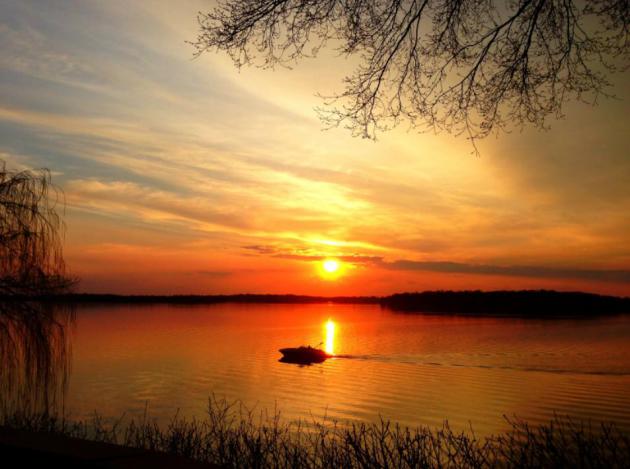
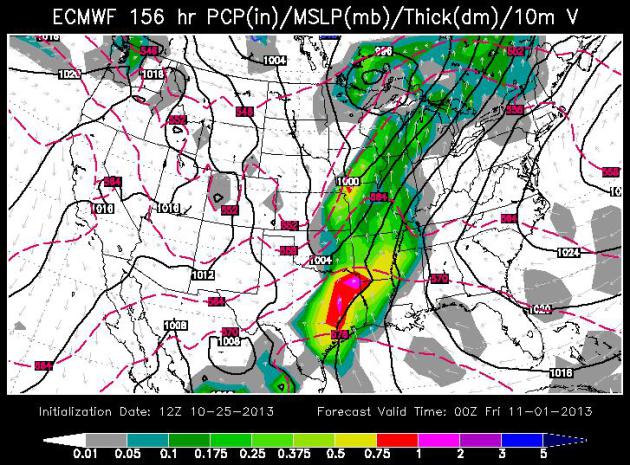
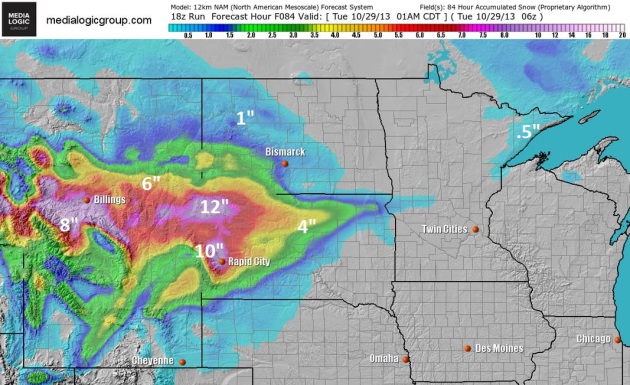
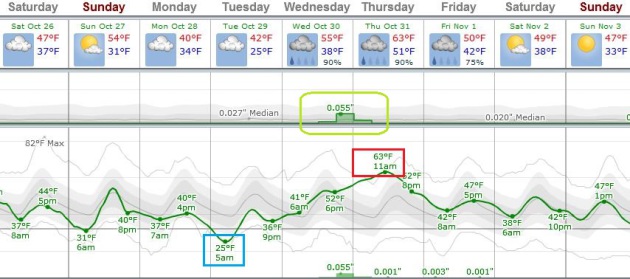
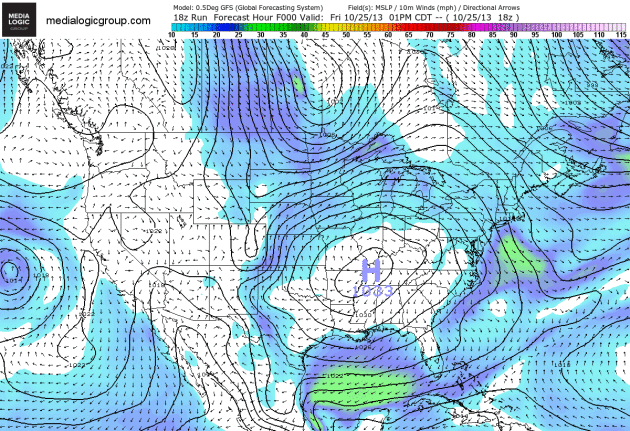

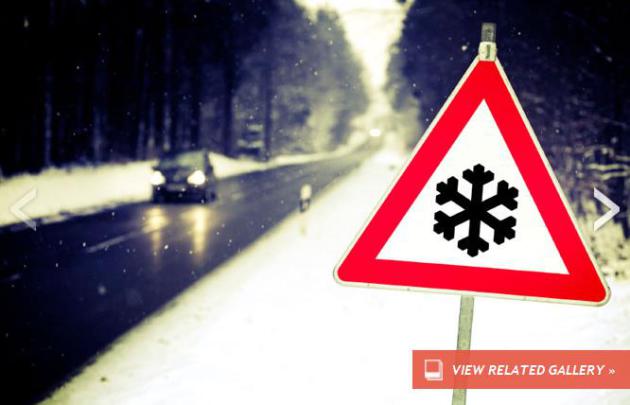
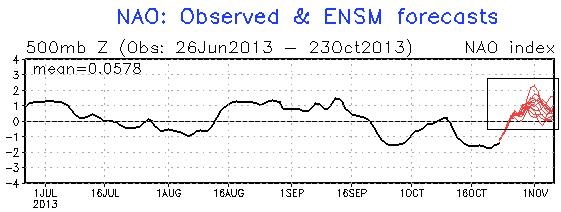
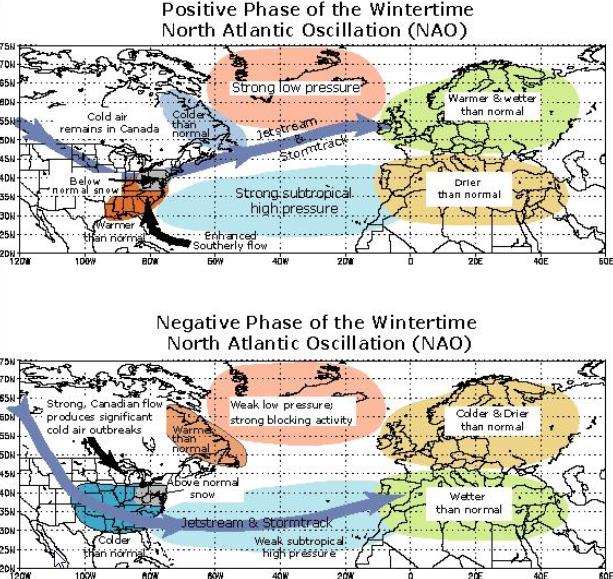
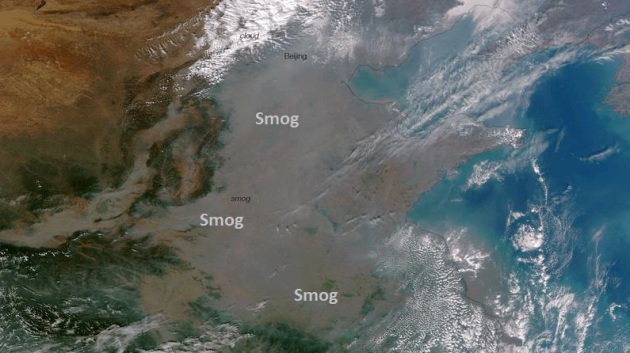
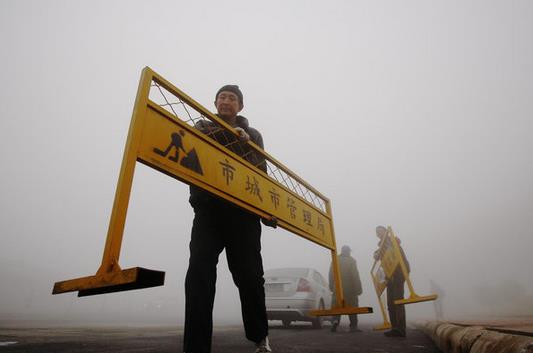
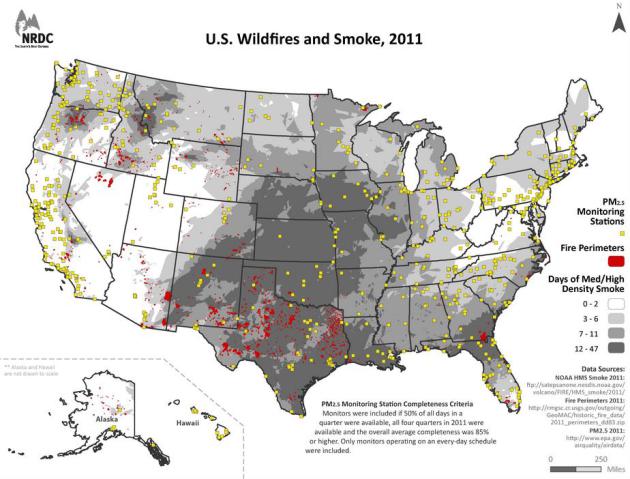
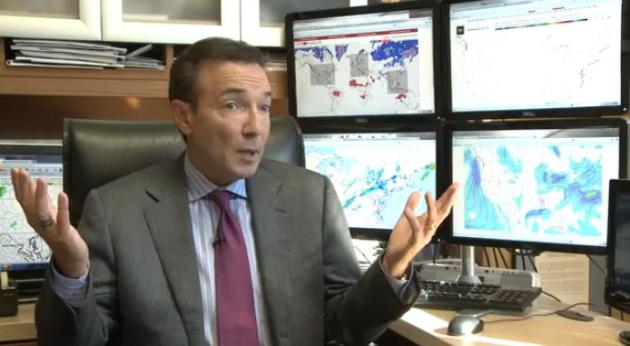
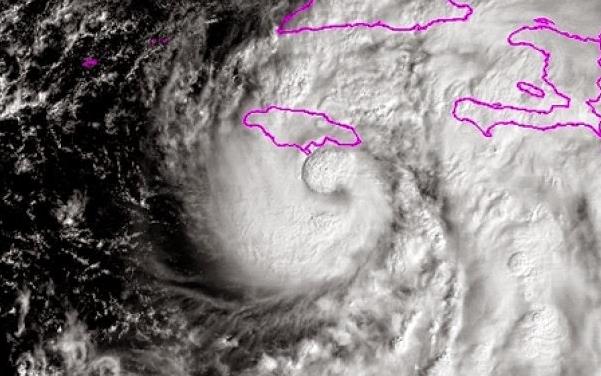


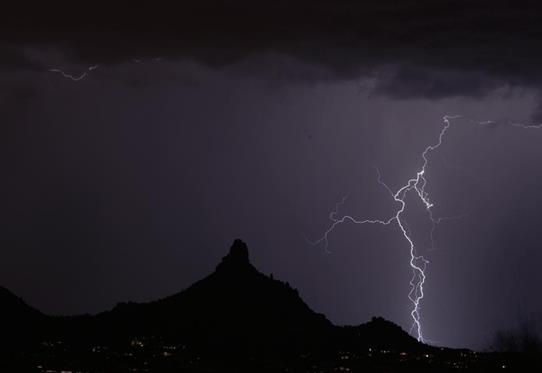
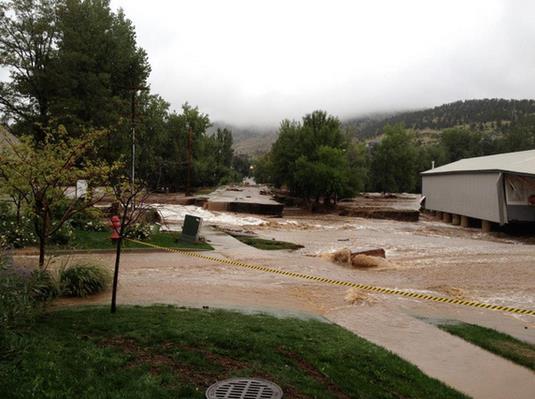
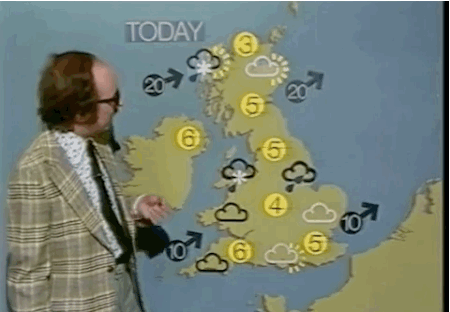







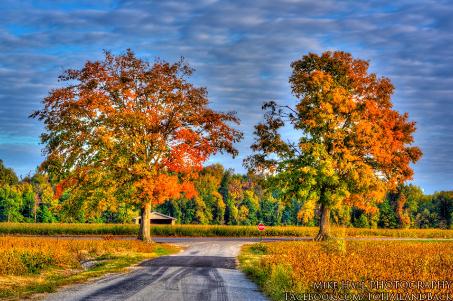
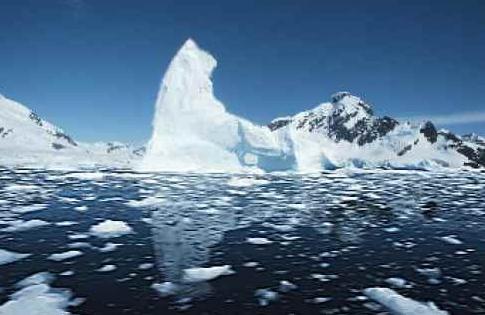
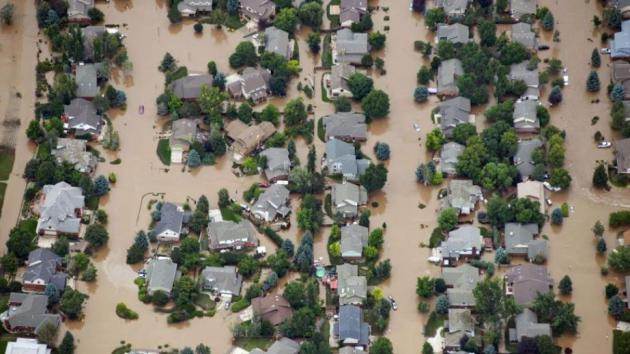


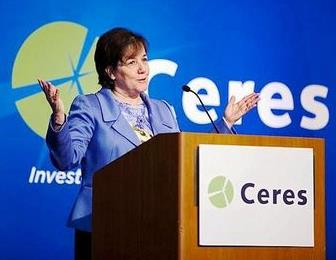
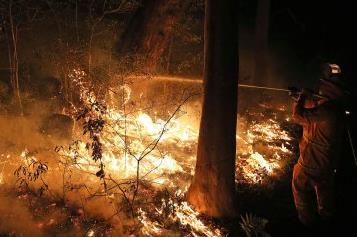

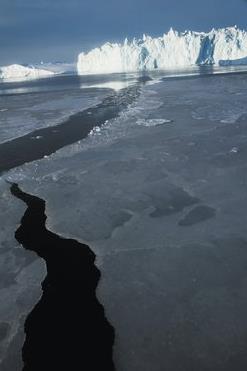
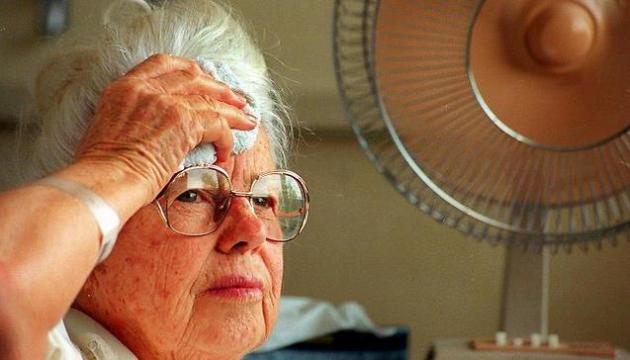
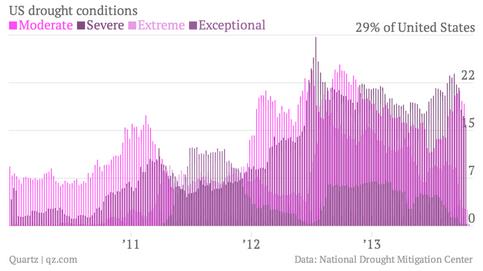
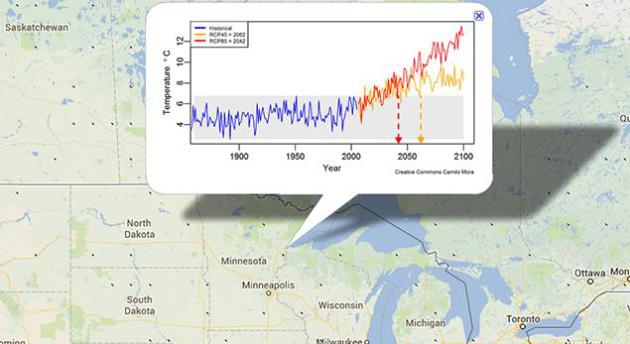
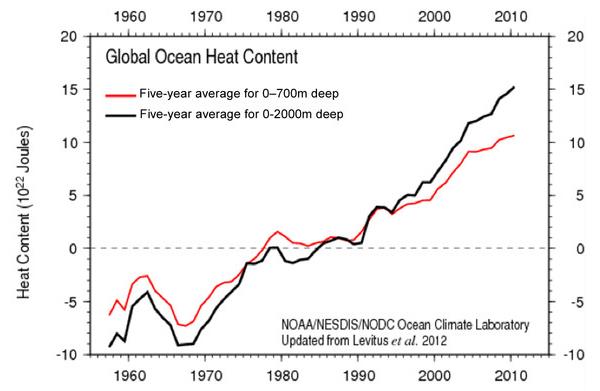

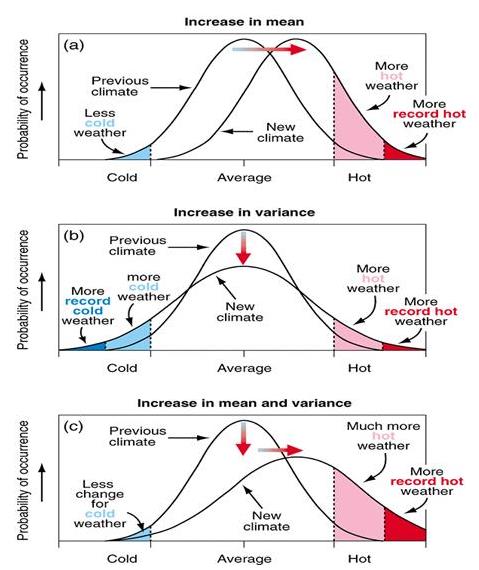
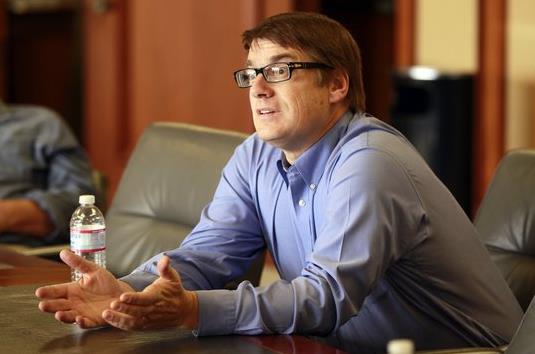
No comments:
Post a Comment